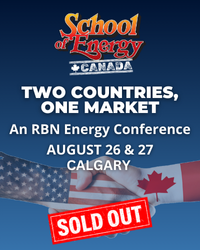When Philadelphia Energy Solutions (PES), owner of the East Coast’s largest refinery, recently announced it was seeking Chapter 11 bankruptcy protection, it begged a question: What happened? The answer requires a look back at the company’s original vision — namely, to capture the upside of the Shale Revolution by processing price-advantaged light, sweet crude oil produced in the U.S. — as well as a review of market developments that undermined its plan. Today, we look at the factors that drove PES’s hopes and why, in the end, they weren’t realized.
PES was formed as a partnership in September 2012 between The Carlyle Group and Sunoco Inc. to rescue the 335-Mb/d Philadelphia Refining Complex. Carlyle would hold a two-thirds ownership interest while Sunoco Inc. (which bought the complex’s Point Breeze refinery in 1988 and its Girard Point refinery in 1994) retained ownership of the remaining third. Just after the PES partnership was launched, in October 2012, Sunoco became a subsidiary of Energy Transfer Partners.
At the time, Carlyle was among a distinguished group of white knights from the private equity realm that helped revitalize the Mid-Atlantic refining sector by eschewing the then higher-priced imported crude that their refineries had traditionally run in favor of price-advantaged light, sweet crude produced in the U.S. But the dynamics that had initially boosted PES’s standing — most notably relying on relatively cheap Bakken crude transported to Philly by rail — shifted, leaving the refinery on shaky ground.
Let’s start by reviewing the PES vision. PES’s identity was pegged to the boom in U.S. production made possible by the Shale Revolution, so much so that even the company’s name was meant to evoke a mission beyond refining. PES executives saw the revitalization of their refinery as part of a larger effort to make Philadelphia an energy storage, processing and transportation hub for Marcellus/Utica and other unconventionally produced hydrocarbons. They also intended to optimize the Philadelphia Refining Complex’s economics by railing in steeply discounted crude from the Bakken Shale in North Dakota to the complex’s combined Point Breeze and Girard Point operations. In addition, PES and other East Coast refiners hoped that pipelines would one day be built from the Bakken to the East Coast, reducing transportation costs and further enhancing the refineries’ economics.
Join Backstage Pass to Read Full Article






